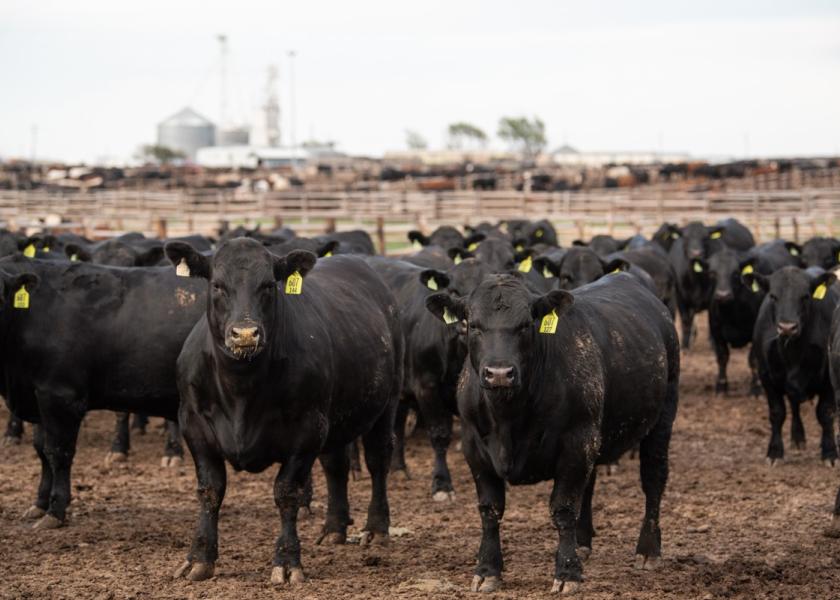Improved Efficiency and Rising Prime Grades Drive Industry Growth: Insights from 2022 National Beef Quality Audit for Fed Cattle

Results from the 2022 National Beef Quality Audit provide insight into the quality and value of cattle on the rail, determining ways the industry might look to improve in the coming years.
Broken into two reports: 1) Fed Cattle, and 2) Market Cows and Bulls, the Beef Checkoff Funded audit shares findings based on individual interviews of buyers of beef, including packers, retailers, further processors, food service and government and trade organizations, in-plant research and a strategy session with industry members.
Audit results indicate a number of improvements since the last report in 2016. Specifically, the largest improvement was in overall increased efficiency across the beef supply chain, the report notes.
Other findings from the report include:
• Increased participation in branded beef programs, with gene programs jumping from 0.6% in 2016 to 12.6% in 2022
• Increase in black-hided cattle to 62% (up 4% since 2016, up 17% since 2000), with a decrease in Holstein hide color to 12.3%, confirming the industry trend of using beef sires on dairy cattle
• Increased use of electronic identification (EID)
• Increased frequency of Prime and Choice quality grades, while Select decreased drastically
• Increased carcass weight and fat thickness, as well as large increases in percentages of Yield Grade 4 and 5 carcasses
• Improved image of the beef industry with fed cattle market sectors
• More cattle over 30 months of age were harvested, due to pandemic pressures
• Highest frequency of carcass bruising recorded since audits began (52.3%)
• Nearly 92% of cattle received a mobility score of 1, meaning the animal walks normal and with no apparent lameness or change in gait, a decrease from 97% in 2016—attributed to larger cattle and longer time spend during transport
• Nearly 93% of transportation service providers were familiar with the Beef Quality Assurance Transportation (BQAT) program and 91% are BQAT certified
In a recent AgriTalk conversation, Michaela Clowser, director of producer education for the National Cattlemen's Beef Association (NCBA), shares how the narrative of packers, retailers, foodservice and government and trade organizations focused on increased efficiency throughout the audit process.
Specifically coming out of COVID context, Clowser notes, “A change to improve systematic processes that, you know, could have taken five years to make was pushed to six months like automation and the ability to turn products from food service to retail. You know, these companies saw that as extremely efficient.”
Additionally, the ability to manage the supply chain and keep animals alive during COVID—adjusting to slow downs in processing—proved important as consumers continued to seek beef in the meat case.
Clowser adds, the increase in overall quality of beef also resonated through the audit process, with focus on genetic or branded beef programs and increases in Prime and Choice quality grades. Specifically, in 2022, 7.5% of cattle surveyed rated Prime, while only 3.8% graded Prime in 2016.
“We heard researchers mentioned that they never thought that they would see the industry moving towards 10% of cattle grading prime and that's the trajectory we're on,” Clowser says.
While a number of improvements were found through the audit, the industry has areas of improvement to focus on in the coming years, the report adds.
These improvements needed include:
• Traceability-- A concern among the beef supply chain in the instance of an animal disease, improve technology used in recordkeeping and data collection—currently not robust enough in the U.S. to combat the potential threat
• Health and Husbandry—Improve preventative strategies and good cattle husbandry techniques to ensure future effectiveness of antimicrobials, as well as decrease frequency of foreign objects found in carcasses
• Liver Abscesses—Improve amount of product loss and decreased profitability
• BQA—Continue effort to increase certifications and awareness, as well as address increases in bruising frequency through facility and trailer design and cattle handler training
• Heat Stress—Mitigate effects of heat stress and other environmental factors causing bruising, dark cutters and heart issues, as well as decreased mobility
• Yield Grades—Improve genetics to maintain ideal Yield Grade 3 or better, while maintaining marbling necessary to achieve desired quality grades. Additionally, breed cattle for carcasses with increased eating satisfaction, uniformity and desirable end-product specifications.
Clowser points out, “cattle are getting bigger, faster than we can implement the needed changes to accommodate larger cattle. You know, it's a huge investment for producers and a big ask for them to modify their handling facilities as well as a massive undertaking to change cattle pots and trailers and to keep cattle from hitting that top line.”
Overall, consumers first value eating quality and an overall good eating experience, Clowser adds, with animal welfare being their largest concern.
“It's important, more than ever before, to stay up to speed on proper management practices and BQA helps you as a producer advocate for your cattle and the entire industry,” she says.







